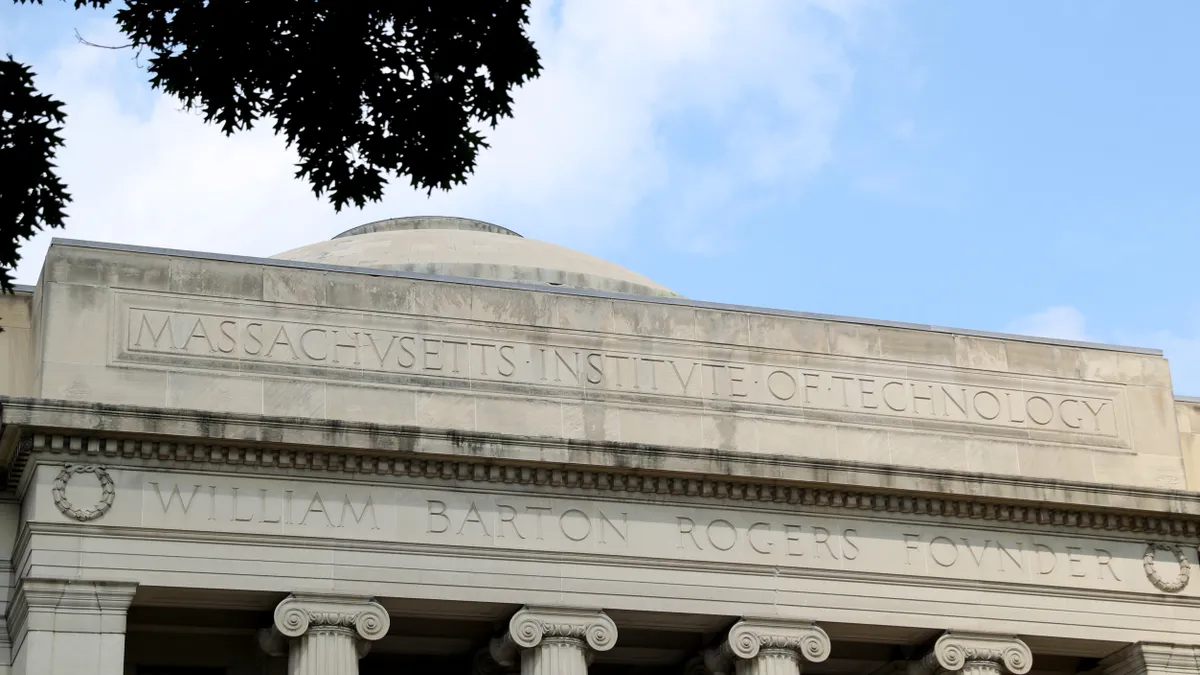Throughout rural Southern India, agricultural development is getting a boost from a line of irrigation and sprinkler products that was first developed far away in Minnesota.
Called MyRain, the company was launched in 2012 by a business graduate and engineering graduate at the University of Minnesota (UMN) who were each participating in a social entrepreneurship program. Part of UMN’s Institute on the Environment (IonE), the program, Acara, demonstrates how faculty members and students from different disciplines are working together to find solutions to the world’s problems.
“Real-world problems never sit in a discipline,” says Jessica Hellmann, the director of IonE, adding that the traditional university model of being organized into colleges and schools is a “great way of getting a basic education, but [they] are crappy at problem solving.”
At a time when society continues to question whether a college education is worth the investment, such multidisciplinary centers that connect faculty and students across subject areas might even “represent a possible future for universities,” suggests Andrew J. Hoffman, a professor at the University of Michigan (UM) and the co-author of a study released this month that explores the characteristics, activities, challenges and opportunities for sustainability institutes. “These places are doing applied work, trying to bring all the disciplines together,” says Hoffman.
IonE is just one of 18 such institutes featured in “Examining Interdisciplinary Sustainability Institutes at Major Research Universities: Innovations in Cross-Campus and Cross-Disciplinary Models,” which was supported by funding from the Cynthia and George Mitchell Foundation.
The study, which is based on a survey of institute leaders, looks at how these multidisciplinary institutes are working on environmental and sustainability issues. But the findings and lessons “could be applicable to any topical institute that seeks to link the multiple disciplines of a university campus into a common endeavor,” Hoffman and co-author Jessica L. Axson write.
“Fostering greater interconnections among the many disciplines in a university is necessary for both addressing the major issues of our day, and reinvigorating the vitality of the university research enterprise."
Axson, a chemist and postdoctoral research fellow at UM whose work focuses on the environmental and health aspects of particulate matter, says these cross-curricular conversations can lead to higher-quality research.
“It’s great to listen to other students in other disciplines and see that their work can benefit yours,” she says, “and that you have something to contribute to theirs.”
A service-minded approach
One theme that emerged from the survey is that these institutes can be viewed as competing with other colleges and departments on campus for resources, research grants, and students. One institute avoided this tension by requiring its students to have double majors, while another required its graduate students to mentor undergraduates in research — an example of how an institute can provide a service to the university as a whole.
“Everyday these institutes have to be nimble and creative and so collaborative,” Hellmann says.
Working with the facilities and operations staff to improve efficiency and lower costs is one way that institutes contribute to their universities, the survey shows. Institute leaders also work closely with those in charge of campus sustainability.
Hellmann says one of the biggest ways that IonE contributes to the larger university is by helping faculty members and students communicate their work to the public and put it into a format that various audiences can understand.
“We’re like a bridge organization that sits between the ivory tower and consumers of information,” she says.
Christine Baeumler is not a hydrologist or an entomologist, but as an art professor at UMN, her work focuses on urban greenspaces, insect habitats and other environmental issues.
“As an artist, I appreciate using real science,” she says. “I have to work in this interdisciplinary way to do my work.”
Through the connections she made at IonE, she began to co-teach a class called “Making Sense of Climate Change: Science, Art and Agency.” For the second year, her students, both graduates and undergraduates, will participate this month in Northern Spark, an all-night, summer arts festival in Minneapolis and St. Paul focusing on climate change.
At last year’s event, the students created white flags depicting how they have given in to climate change or to express what they would be willing to give up in order to prevent it, in a discussion with the theme of “Surrender: What are We Willing to Lose?” At this year’s festival, the theme is “Grand Challengers: Tunnel Vision.” Participants will enter a tunnel and experience rising temperatures and increased storm frequency. The students have built the structure, created the sound effects and used social media to share the message of their work.
“There is this feeling of a real-world outcome,” Bauemler says.
A ‘generation shift’
Hoffman notes that in addition to giving students opportunities to conduct interdisciplinary research, these institutes also support students’ interests in interacting with organizations and agencies outside of the university and applying what they are learning now instead of waiting until they’ve earned a degree.
There is a “generation shift,” Hoffman says, and young scholars are don’t want their impact in the world measured “purely by citation counts.”
“These students, they think they could start their own company,” Hellmann adds. “They could make an app tomorrow.”
For Sophie Purdom, a 2016 graduate of Brown University, that real-world application included traveling to Warsaw, Poland and Lima, Peru to participate in U.N. climate talks as part of the Climate and Development Lab in the Institute at Brown for Environment and Society.
“The students in this lab become real experts,” says Purdom, who now sits on the institute’s advisory board and is especially interested in the connections between policy, economics, and the environment. “My niche was really to be able to communicate business solutions to climate change that really resonated with folks. I needed to learn how to speak the language of the oil and gas representatives.”
Institute faculty members and students also collaborate with a wide variety of government and non-government organizations in their communities. IonE works with corporations, such as General Mills and Cargill, on ways to increase agricultural productivity without acquiring more land. As part of the Natural Capital Project, IonE faculty and students also calculate the value of natural resources and share it with decision makers, such as city planners and state legislators. In Minnesota, for example, Hellmann’s team looks at how much farther someone will drive to visit a cleaner lake.
Institutes hold conferences, bring in outside speakers and sponsor other networking events to connect with various stakeholders. Another way institutes are interacting with and serving their larger communities is by providing professional learning opportunities for teachers. At Penn State Institutes of Energy and the Environment, teachers from across Pennsylvania can gather this summer for a weeklong workshop on plant-pollinator research and work with data collected by master gardeners.
Baeumler has also been getting requests from schools for visits from the Climate Chaser, a vintage camper and mobile phenology lab — referring to the study of changing seasons. Decorated with graphic designs, the vehicle travels to climate and nature-related events and invites participants to record their observations about changes in the environment. The Backyard Phenology team has already handed out 3,000 “citizen science passports” that teachers can use with their students.
Broader lessons
Healthcare, which brings together science, public policy expertise, and communication strategies, is another multidisciplinary topic that “could benefit from a similar kind of structure,” Hoffman says. Immigration is also a topic that requires multiple perspectives, Hellmann adds, referencing UMN’s James H. Binger Center for New Americans.
Bonnie Keeler, who directs the Natural Capital Project at UMN, and several co-authors, explain this approach to the future of universities in a paper that appeared last month in the journal BioScience.
“Progress will come in the form of outward-facing units such as those represented by many of the coauthors, university infrastructure dedicated to bridging science to practice, and new positions that reward impact and engagement,” they write. “When institutions support and incentivize work of societal relevance, researchers will not have to wait until tenure to explore controversial topics and to develop the partnerships that lead to long-term engagement and discovery.”
According to Hoffman and Axson’s study, sustainability institutes are looking for the right balance between serving their campuses and challenging universities to think differently about education.
Institute directors can be the “thorn in the side of a dean,” Hellmann says. “Institutes are constantly poking the university and pushing for innovation.”


















